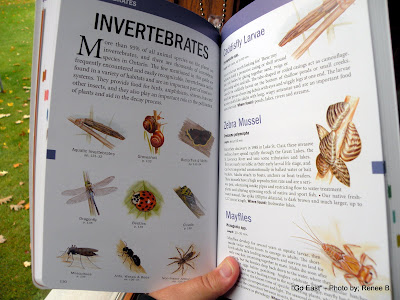In abundance on the property are bugs, bugs and more bugs! Just when our mosquitoe population began to dwindle, more bugs came to call.
Surprises await every day. "What will we find today?"... is a phrase I utter often with our children when we take time to meander outdoors. Bug bottles or plastic sandwich bags often accompany us, usually in tow at the very least is a baggie. Inside our identification guides are sprinkled about and subsequent searches for the perfect pencil crayon shade for capturing the subjects become the sport of the afternoon when surrounded by spiraled sketch books.
Many folks adore ladybugs, some even collect all things similar. My preference is for them to be temporarily captured and removed from indoors as one of our former homes was terribly infested with these invertebrates, thousands living within the walls, revisiting us year after year. One is cute. Many are just gross!
Our children soon learned bug hunting came with bonuses from their mother because there were so many dozens and dozens waltzing about our windows on any given warm afternoon. Sure, oh sure, they are the good guys, gulping back multitudes of insects to assist with ridding the home of them. On a personal note, I'm done with yellow ladybug gut' splotches on the walls when the children accidentally squish them instead of capture them . Yep, I'm done with that. I don't invite them in here any longer. They can remain outdoors.
How to rid our home of them though?
Open any window for an afternoon fresh air blitz, and dozens of ladybugs and flies flea out into the wild blue yonder. They are wanting to nest for winter and the winter window is seemingly closing quicker now.
Fun Facts about Ladybugs;
- Not all are orange with black spots - species vary in size, color and number of spots.
- Ladybugs colors can be red, orange, yellow, brown, tan or gray, even black.
- Ladybugs usually have 10 spot pattern on an orange back, but black and unmarked forms also occur.
- There are over 5000 types of ladybugs in the world, over 400 in North America alone.
- The name "ladybug" refers to the Lady Virgin Mary's red robes.
- One ladybug will lay over 1000 eggs in her lifetime.
- Ladybugs bite though they can't hurt you.
- A ladybug makes a chemical that smells and tastes terrible, so birds and other predators won't eat them.
- A ladybug's favorite food is aphids, great for the garden which justifies my theory they do indeed belong outside.
- Ladybugs spots fade the older they age.





.jpg)












